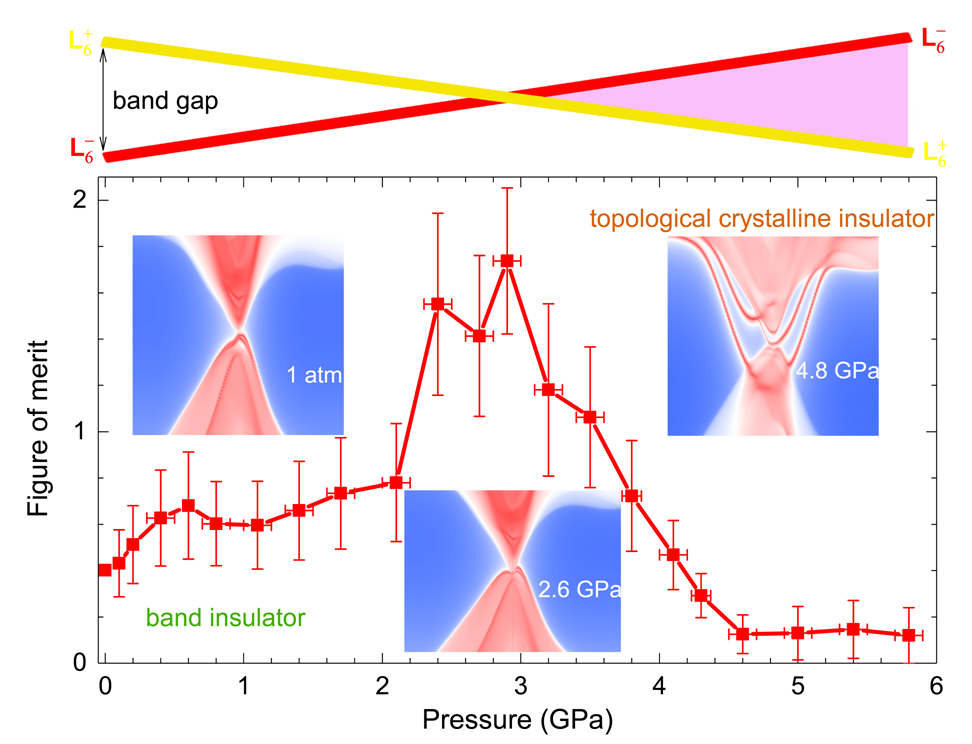Pressure May Be Key To Fighting Climate Change With Thermoelectric Generators- Dr. Xiaojia Chen
OCTOBER 7, 2019
New study from a team of scientists led by Dr. Xiaojia Chen from HPSTAR found that pressure can improve the ability of materials to turn heat into electricity and could potentially be used to create clean generators. The work is published in Nature Materials.
Alternative energy sources are key to combating climate change caused by carbon emissions. Compounds with thermoelectric capabilities can convert thermal energy’s innate, physical need to spread from a hot place into a cold place into energy—harvesting electricity from the temperature differential. In theory, generators built from these materials could be used to recover electricity from “wasted” heat given off by other processes, making major contributions to the nation’s energy budget.
However, engineers have been unable to improve the room-temperature performance of any thermoelectric materials in 60 years, meaning that devices built to take advantage of this capability are only practical for some very specific applications, including remote gas pipelines and spacecraft.
“Previous studies indicated that the conversion efficiency can be comparable with the conventional fuels such as coal, oil when the figure of merit ZT(which indicates how efficiently a material converts heat to electricity.) is above 3”, said Dr. Xiaojia Chen. “So improving the ZT is the key in this research field, while for practical applications, we need found the way the to improve the room-temperature ZT”.
The research team—led by Liu-Cheng Chen, a graduate student of HPSTAR—found that they could improve the thermoelectric capability of lead selenide by applying pressure and mixing in charged particles of chromium.
By squeezing the material in the diamond anvil cell —which acted as a sort of “chemical pressure”— the chromium doped lead selenide (Pb0.99Cr0.01Se) was encouraged to undertake a structural rearrangement at the atomic level, enabling the most-efficient demonstration of room-temperature thermoelectric generation ever recorded.
Under 30,000 times normal atmospheric pressure, the chromium-doped lead selenide was able to produce electricity with the same efficiency that the top-performing thermoelectric materials do at 27 degrees Celsius (80 degrees Fahrenheit).

“Our work presents a new way to use compression techniques to improve the thermoelectric performance, bringing us closer to practical applications that could help fight climate change,” said Dr. Xiao-Jia Chen.
The paper’s other co-authors are Pei-Qi Chen of MIT, Wei-Jian Li of the Xiao-Jia Chen of the Center for High Pressure Science and Technology Advanced Research, and Qian Zhang and Zhifeng Ren of the University of Houston.
Caption: Pressure driven the topological phase transitionthe and improvement of ZT of (Pb0.99Cr0.01Se).
Adapted from Carnegie Institution for Science.
Media reports: Phys. Org: https://phys.org/news/2019-10-pressure-key-climate-thermoelectric.html
Science Daily: https://www.sciencedaily.com/releases/2019/10/191007113319.htm
《科学网》: http://news.sciencenet.cn/htmlnews/2019/10/431176.shtm
热电材料可以实现将废弃的热能转化为有用的电能,是重要的下一代能源材料,在废热发电 空间科学探索,手机等微电子制冷等方面具有广泛的应用前景。热电转换效率是评估热电材料的重要指标,而热电转换率取决于材料的热电优值。北京高压科学研究中心的陈晓嘉研究员带领的研究小组利用压缩晶格诱发拓扑相变,在室温下将铬掺杂的铅硒体系的热电优值提高到1.7,远高于此前普遍认可的室温最高值。这一发现不仅提供了一条提高热电优值的新方法,也为未来热电材料在室温下的技术应用,特别是解决手机相关微电子器件的发热问题带来曙光。相关结果以“Enhancement of thermoelectric performance across the topological phase transition in dense lead selenide”为题于10月7日发表于著名学术期刊Nature Materials《自然材料》。
